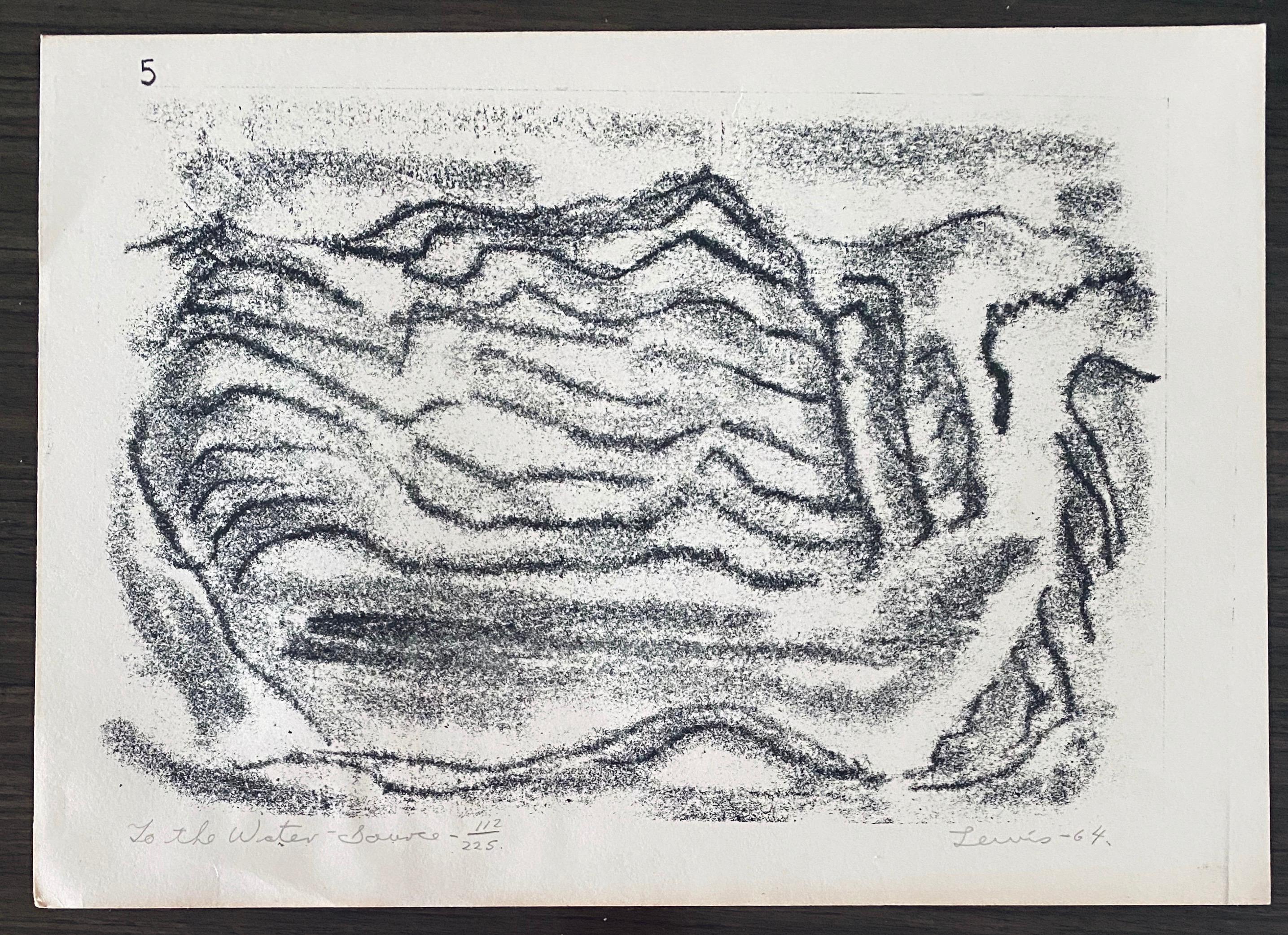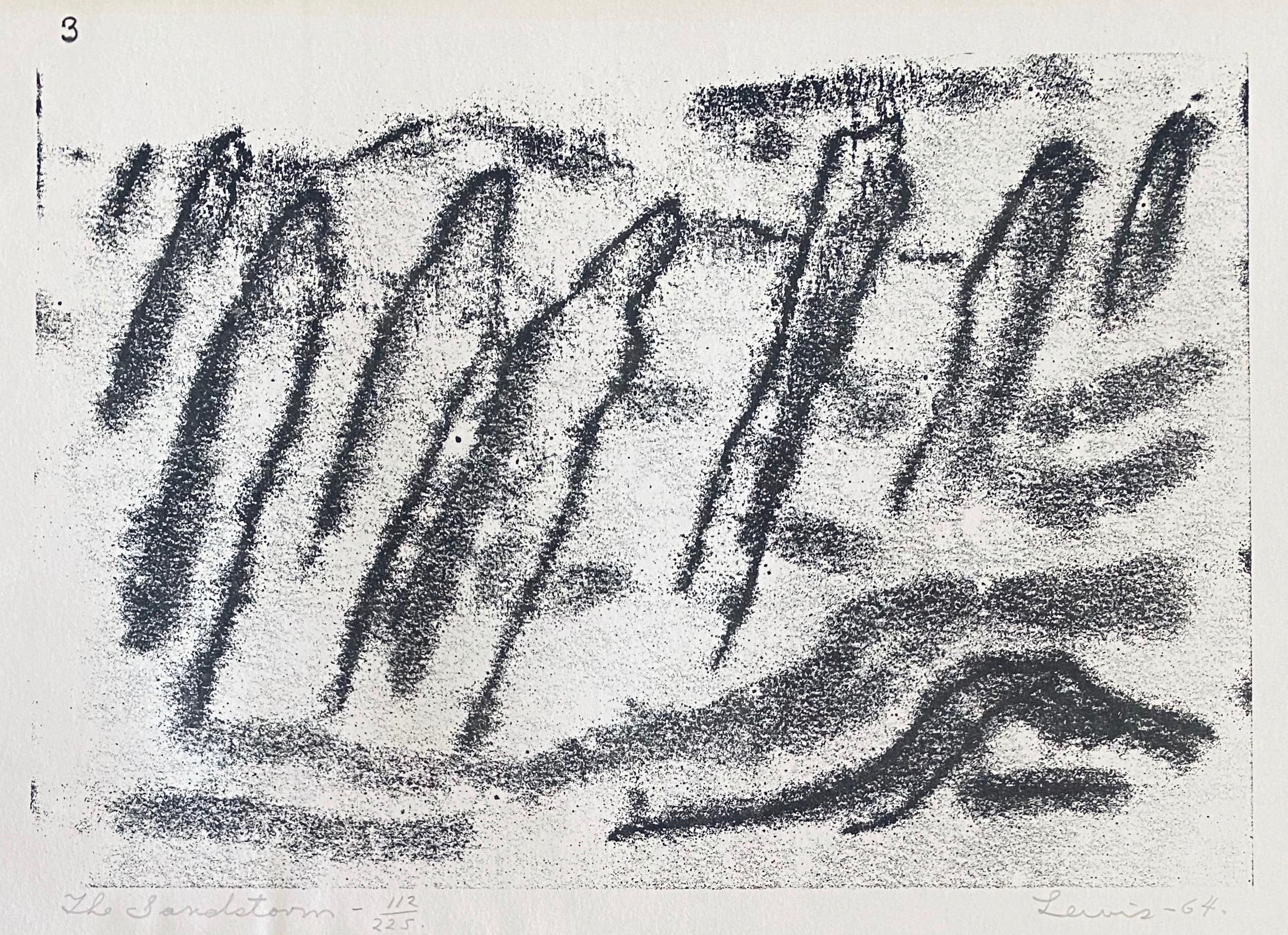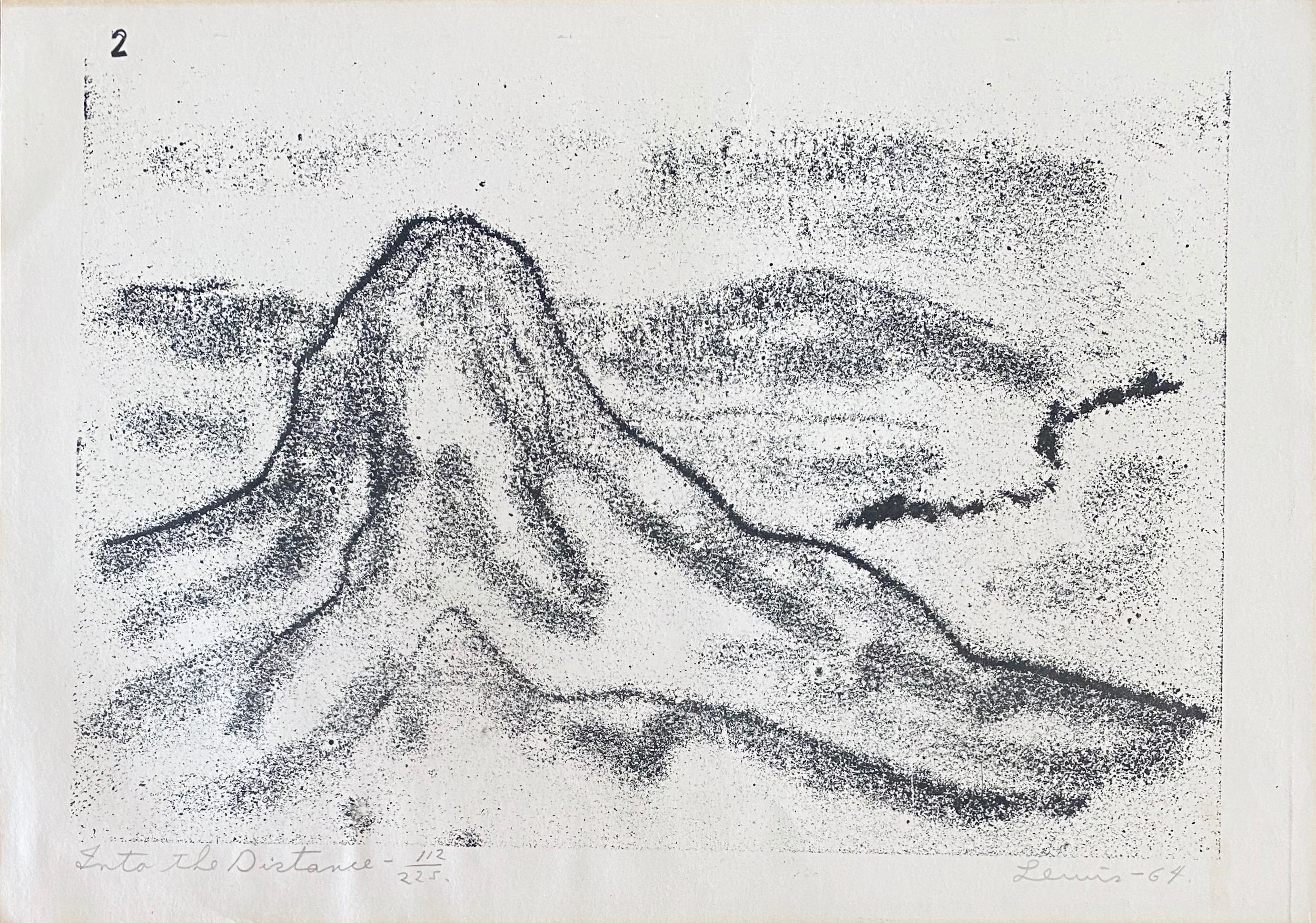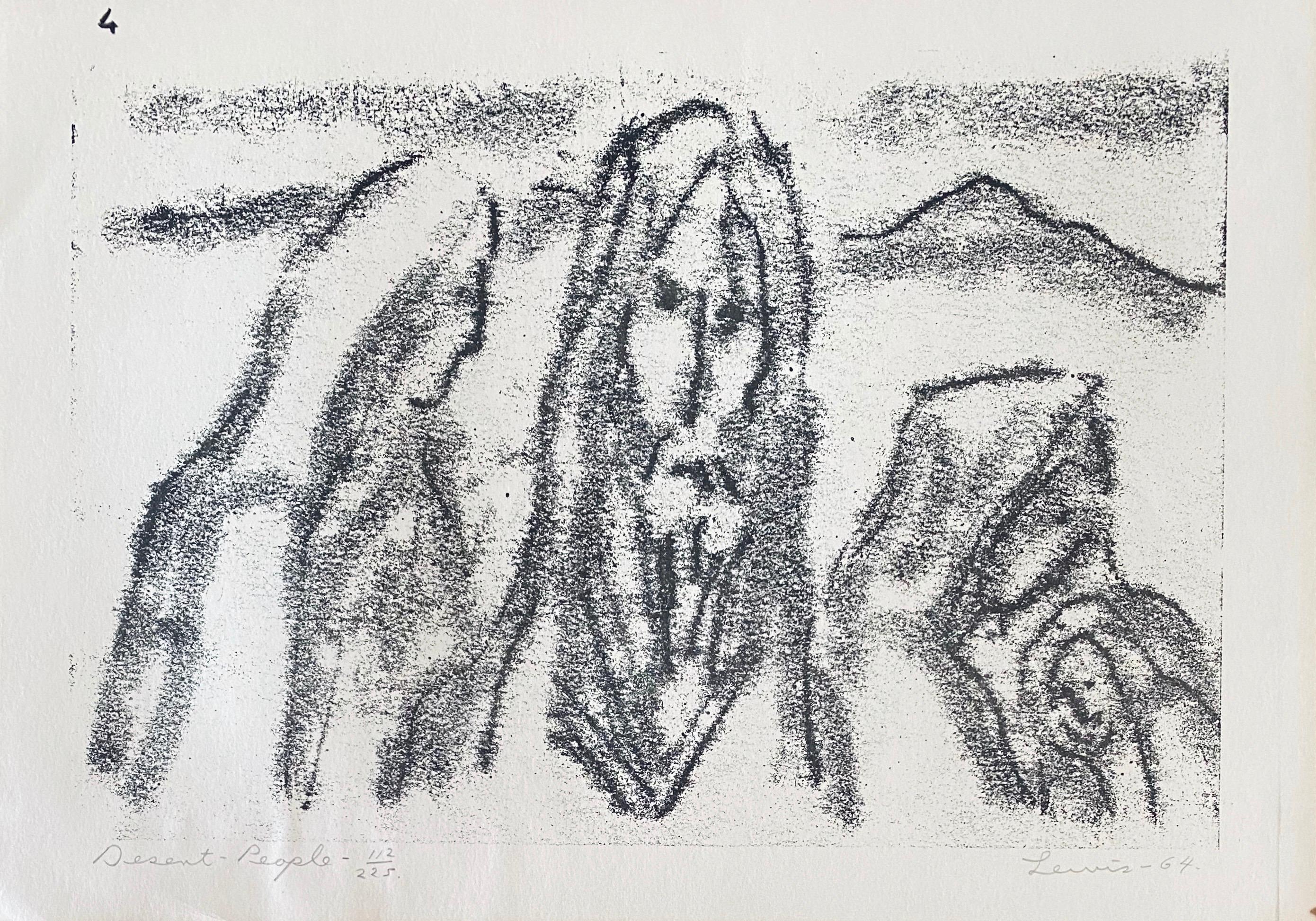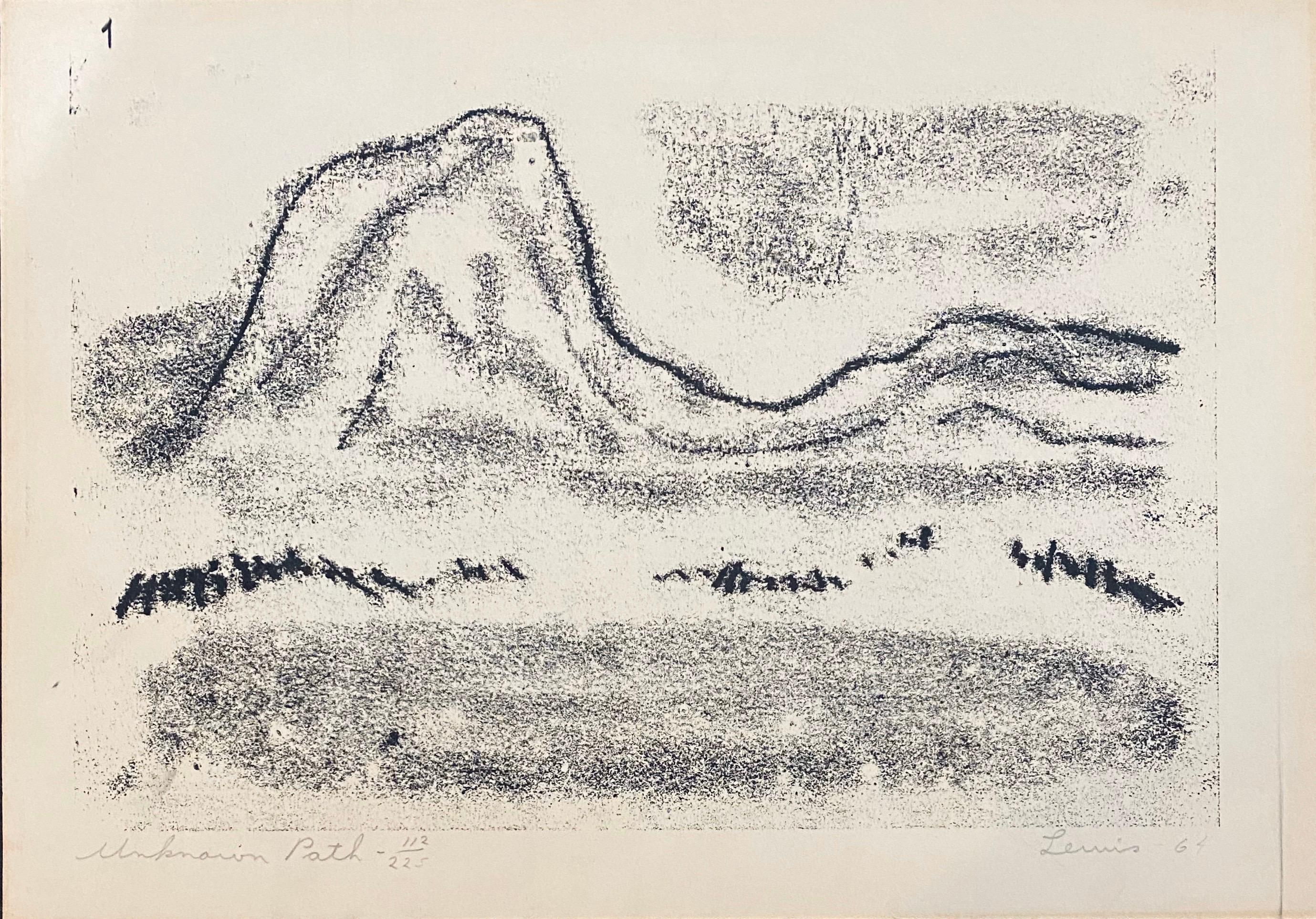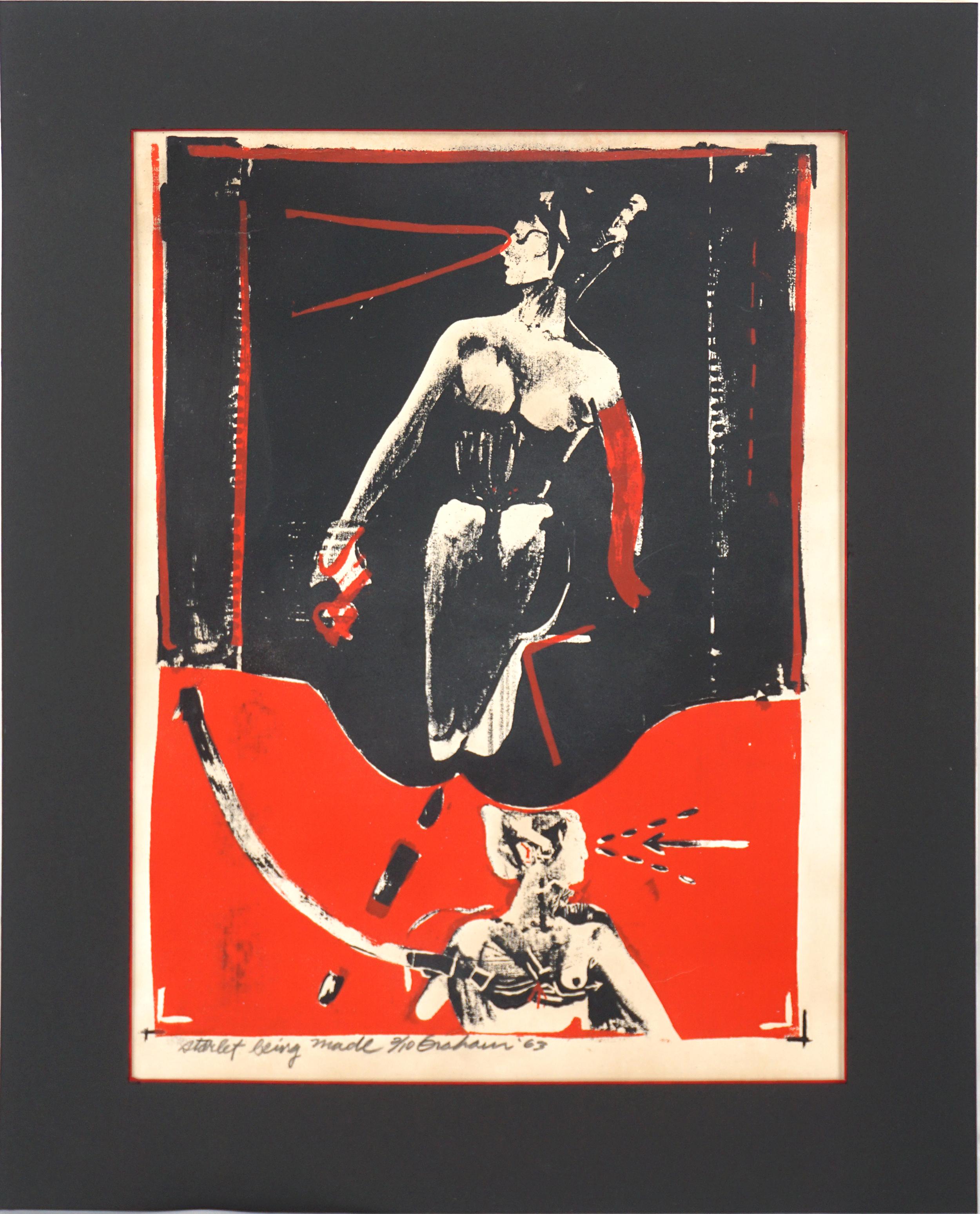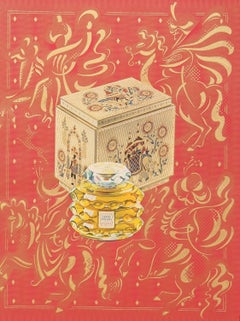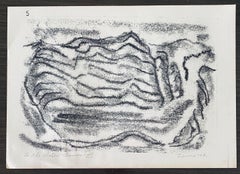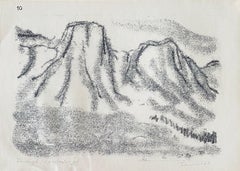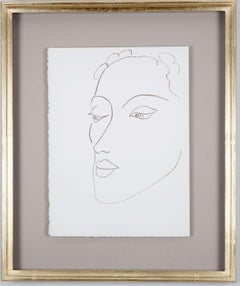
Henri Matisse: Illustrations for "Poesies Antillaises", Framed Print, 1946
View Similar Items
Henri MatisseHenri Matisse: Illustrations for "Poesies Antillaises", Framed Print, 1946 1946
1946
About the Item
- Creator:Henri Matisse (1869-1954, French)
- Creation Year:1946
- Dimensions:Height: 22 in (55.88 cm)Width: 18.25 in (46.36 cm)Depth: 1 in (2.54 cm)
- Medium:
- Period:
- Condition:
- Gallery Location:Richmond, GB
- Reference Number:Seller: 102601stDibs: LU155628306322
Henri Matisse
Whether working as a draftsman, a sculptor, a printmaker or a painter, Henri Matisse was a master of color. Although classically trained at the Académie Julian, in Paris, he quickly abandoned traditional techniques and genres to pioneer a style all his own, marked by quick, gestural strokes and fluid contours.
Along with fellow painter André Derain, Matisse was the leading proponent of Fauvism, a movement whose name is derived from the French word for "wild beast.” Marked by vibrant hues, Fauvist paintings like Matisse’s famous 1906 composition Le Bonheur de vivre use wild, active brushstrokes and a palette unconstrained by nature, resulting in women with purple skin and trees with orange leaves. Often, these compositions unite pure color with the white of exposed canvas to create a sense of transparency and light.
In addition to masterful landscapes and still lifes, Matisse loved to paint erotic subjects, particularly the female nude. Rejecting strict realism, he distilled the form into its essential parts and then translated these into voluptuous, rounded contours. With its striking colors and sculptural modeling of the figure, Odalisque couchée aux magnolias is among Matisse’s most famous works — and the most expensive work of his ever sold — depicting Henriette Darricarrère, his muse and favorite model for around seven years, lounging luxuriously in his Nice studio. In pictures like the lithograph Nu Bleu, he explored the expressive power of a body in motion by placing his figures in twisted or contorted poses, transforming their limbs into tangles of color and shape that push figure painting toward abstraction.
Find original Henri Matisse prints, sculptures and other art on 1stDibs.
- Bienaimé Parfums, Paris 1947 Lithograph Print on Embossed PaperLocated in Richmond, GBCharming detailed lithographs published by Draeger, Paris 1947 for the perfume house Bienaimé. Printed in colours and highlighted in gold and silver on embossed paper. Some with appl...Category
20th Century More Prints
MaterialsGold, Silver
- Bienaimé Parfums, Paris 1947 Lithograph Print on Embossed PaperLocated in Richmond, GBCharming detailed lithographs published by Draeger, Paris 1947 for the perfume house Bienaimé. Printed in colours and highlighted in gold and silver on embossed paper. Some with appl...Category
20th Century More Prints
MaterialsSilver, Gold
- Bienaimé Parfums, Paris 1947 Lithograph Print on Embossed PaperLocated in Richmond, GBCharming detailed lithographs published by Draeger, Paris 1947 for the perfume house Bienaimé. Printed in colours and highlighted in gold and silver on embossed paper. Some with appl...Category
20th Century More Prints
MaterialsGold, Silver
- Bienaimé Parfums, Paris 1947 Lithograph Print on Embossed PaperLocated in Richmond, GBCharming detailed lithographs published by Draeger, Paris 1947 for the perfume house Bienaimé. Printed in colours and highlighted in gold and silver on embo...Category
20th Century More Prints
MaterialsGold, Silver
- Bienaimé Parfums, Paris 1947 Lithograph Print on Embossed PaperLocated in Richmond, GBCharming detailed lithographs published by Draeger, Paris 1947 for the perfume house Bienaimé. Printed in colours and highlighted in gold and silver on embossed paper...Category
20th Century More Prints
MaterialsGold, Silver
- Bienaimé Parfums, Paris 1947 Lithograph Print on Embossed PaperLocated in Richmond, GBCharming detailed lithographs published by Draeger, Paris 1947 for the perfume house Bienaimé. Printed in colours and highlighted in gold and silver on embo...Category
20th Century More Prints
MaterialsGold, Silver
- "To The Water Source" from Wanderers Illustrations 112/225By Stanley LewisLocated in Surfside, FLStanley Lewis was a Jewish Canadian sculptor, photographer and an internationally renowned art teacher born on March 28, 1930 in Montreal. His works are held in many public collectio...Category
1960s Abstract Prints
MaterialsInk, Black and White, Lithograph
- "Through The Wadi" from Wanderers Illustrations 112/225By Stanley LewisLocated in Surfside, FLStanley Lewis was a Jewish Canadian sculptor, photographer and an internationally renowned art teacher born on March 28, 1930 in Montreal. His works are held in many public collectio...Category
1960s Abstract Prints
MaterialsBlack and White, Lithograph, Ink
- "Exodus" from Wanderers Illustrations 112/225By Stanley LewisLocated in Surfside, FLStanley Lewis was a Jewish Canadian sculptor, photographer and an internationally renowned art teacher born on March 28, 1930 in Montreal. His works are held in many public collections such as the Montreal Museum of Fine Arts, the Musée national des beaux-arts du Québec[1], and the National Gallery of Canada, as well as in numerous private collections.[2] Since the 1950, Lewis' sculptures and lithographic works have been displayed in the galleries and museums around the world in cities such as Paris, Florence, New York City, and Mexico City. Lewis died on August 14, 2006 at the Montreal Jewish General Hospital due to a heart failure. He is survived by his sister, Sheila Lewis Kanter, and his daughter, Alyssa (Reid) Savage. Stanley Lewis received his formal training through the art school at the Montreal museum of fine arts by artists such as Arthur Lismer, a member of the Group of Seven, and Jacques de Tonnancour. Graduating first in his class, he continued in his studies at the l'Instituto Allende de San Miguel, in Mexico at the workshop of the Master Florentine marble sculptor V. Gambacciani and at the Ein Hod Artist's Colony in Israel. During his travels in Florence, Lewis met Irving Stone who was in turn significantly influenced by Lewis' work, stating "Lewis taught me how to make a chisel fly across marble, and why a sculptor, to be great, has to be a poet as well." In fact, Stone's interest in Lewis' sculpting and research work on the sculptor Michelangelo led to their collaboration on the novel The Agony and the Ecstasy, one of Stone's most well known works. Lewis was a pioneer in colour lithography in Canada, using different lithographic stones for each transparent ink color to give a gradual transitional effect in the print. He was also interested in art of the Italian Renaissance and Inuit sculpture, spending several winters in the Canadian arctic to perfect his artistic skills. Lewis was in charge of the Department of Sculpture at the Saidye Bronfman Centre School of the Fine Arts in Montreal. He also taught fine arts at the Museum of Quebec as well as McGill University. Starting in the 1960s, Stanley Lewis was a founding member of the Quebec Sculptors Association (l'Association des sculpteurs du Québec), renamed the Conseil de la Sculpture du Québec in 1978, which organized annual exhibitions or "Confrontations" to showcase area sculptors such as Mario Merola and Hannah Franklin. Lewis is perhaps most broadly known for his work with Irving Stone during the latter's research for this novel, The Agony and the Ecstasy. In the late 1950s, he travelled with Stone to Italy, reproducing the sculptural tools and techniques Michelangelo used to help the novelist with his work of biographical fiction. Even though he was an avid world traveller, Lewis always returned to Montreal to his studio above Berson Monuments, a gravestone carving company on Saint-Laurent Boulevard, which he said was "a constant reminder that we are mortal souls but our creations are timeless." The studio was considered an important hub and meeting place for artists and up until his death Lewis was an important figure and cornerstone to the Montreal art and Jewish community. Lewis was also a regular customer of the Main Deli Steak House...Category
1960s Abstract Prints
MaterialsLithograph, Ink, Black and White
- "The Mountain Pass" from Wanderers Illustrations 112/225By Stanley LewisLocated in Surfside, FLStanley Lewis was a Jewish Canadian sculptor, photographer and an internationally renowned art teacher born on March 28, 1930 in Montreal. His works are held in many public collections such as the Montreal Museum of Fine Arts, the Musée national des beaux-arts du Québec[1], and the National Gallery of Canada, as well as in numerous private collections.[2] Since the 1950, Lewis' sculptures and lithographic works have been displayed in the galleries and museums around the world in cities such as Paris, Florence, New York City, and Mexico City. Lewis died on August 14, 2006 at the Montreal Jewish General Hospital due to a heart failure. He is survived by his sister, Sheila Lewis Kanter, and his daughter, Alyssa (Reid) Savage. Stanley Lewis received his formal training through the art school at the Montreal museum of fine arts by artists such as Arthur Lismer, a member of the Group of Seven, and Jacques de Tonnancour. Graduating first in his class, he continued in his studies at the l'Instituto Allende de San Miguel, in Mexico at the workshop of the Master Florentine marble sculptor V. Gambacciani and at the Ein Hod Artist's Colony in Israel. During his travels in Florence, Lewis met Irving Stone who was in turn significantly influenced by Lewis' work, stating "Lewis taught me how to make a chisel fly across marble, and why a sculptor, to be great, has to be a poet as well." In fact, Stone's interest in Lewis' sculpting and research work on the sculptor Michelangelo led to their collaboration on the novel The Agony and the Ecstasy, one of Stone's most well known works. Lewis was a pioneer in colour lithography in Canada, using different lithographic stones for each transparent ink color to give a gradual transitional effect in the print. He was also interested in art of the Italian Renaissance and Inuit sculpture, spending several winters in the Canadian arctic to perfect his artistic skills. Lewis was in charge of the Department of Sculpture at the Saidye Bronfman Centre School of the Fine Arts in Montreal. He also taught fine arts at the Museum of Quebec as well as McGill University. Starting in the 1960s, Stanley Lewis was a founding member of the Quebec Sculptors Association (l'Association des sculpteurs du Québec), renamed the Conseil de la Sculpture du Québec in 1978, which organized annual exhibitions or "Confrontations" to showcase area sculptors such as Mario Merola and Hannah Franklin. Lewis is perhaps most broadly known for his work with Irving Stone during the latter's research for this novel, The Agony and the Ecstasy. In the late 1950s, he travelled with Stone to Italy, reproducing the sculptural tools and techniques Michelangelo used to help the novelist with his work of biographical fiction. Even though he was an avid world traveller, Lewis always returned to Montreal to his studio above Berson Monuments, a gravestone carving company on Saint-Laurent Boulevard, which he said was "a constant reminder that we are mortal souls but our creations are timeless." The studio was considered an important hub and meeting place for artists and up until his death Lewis was an important figure and cornerstone to the Montreal art and Jewish community. Lewis was also a regular customer of the Main Deli Steak House...Category
1960s Abstract Prints
MaterialsInk, Black and White, Lithograph
- "The Sandstorm" from Wanderers Illustrations 112/225By Stanley LewisLocated in Surfside, FLStanley Lewis was a Jewish Canadian sculptor, photographer and an internationally renowned art teacher born on March 28, 1930 in Montreal. His works are held in many public collections such as the Montreal Museum of Fine Arts, the Musée national des beaux-arts du Québec[1], and the National Gallery of Canada, as well as in numerous private collections.[2] Since the 1950, Lewis' sculptures and lithographic works have been displayed in the galleries and museums around the world in cities such as Paris, Florence, New York City, and Mexico City. Lewis died on August 14, 2006 at the Montreal Jewish General Hospital due to a heart failure. He is survived by his sister, Sheila Lewis Kanter, and his daughter, Alyssa (Reid) Savage. Stanley Lewis received his formal training through the art school at the Montreal museum of fine arts by artists such as Arthur Lismer, a member of the Group of Seven, and Jacques de Tonnancour. Graduating first in his class, he continued in his studies at the l'Instituto Allende de San Miguel, in Mexico at the workshop of the Master Florentine marble sculptor V. Gambacciani and at the Ein Hod Artist's Colony in Israel. During his travels in Florence, Lewis met Irving Stone who was in turn significantly influenced by Lewis' work, stating "Lewis taught me how to make a chisel fly across marble, and why a sculptor, to be great, has to be a poet as well." In fact, Stone's interest in Lewis' sculpting and research work on the sculptor Michelangelo led to their collaboration on the novel The Agony and the Ecstasy, one of Stone's most well known works. Lewis was a pioneer in colour lithography in Canada, using different lithographic stones for each transparent ink color to give a gradual transitional effect in the print. He was also interested in art of the Italian Renaissance and Inuit sculpture, spending several winters in the Canadian arctic to perfect his artistic skills. Lewis was in charge of the Department of Sculpture at the Saidye Bronfman Centre School of the Fine Arts in Montreal. He also taught fine arts at the Museum of Quebec as well as McGill University. Starting in the 1960s, Stanley Lewis was a founding member of the Quebec Sculptors Association (l'Association des sculpteurs du Québec), renamed the Conseil de la Sculpture du Québec in 1978, which organized annual exhibitions or "Confrontations" to showcase area sculptors such as Mario Merola and Hannah Franklin. Lewis is perhaps most broadly known for his work with Irving Stone during the latter's research for this novel, The Agony and the Ecstasy. In the late 1950s, he travelled with Stone to Italy, reproducing the sculptural tools and techniques Michelangelo used to help the novelist with his work of biographical fiction. Even though he was an avid world traveller, Lewis always returned to Montreal to his studio above Berson Monuments, a gravestone carving company on Saint-Laurent Boulevard, which he said was "a constant reminder that we are mortal souls but our creations are timeless." The studio was considered an important hub and meeting place for artists and up until his death Lewis was an important figure and cornerstone to the Montreal art and Jewish community. Lewis was also a regular customer of the Main Deli Steak House...Category
1960s Abstract Prints
MaterialsBlack and White, Lithograph, Ink
- "Into the Distance" from Wanderers Illustrations 112/225By Stanley LewisLocated in Surfside, FLStanley Lewis was a Jewish Canadian sculptor, photographer and an internationally renowned art teacher born on March 28, 1930 in Montreal. His works are held in many public collections such as the Montreal Museum of Fine Arts, the Musée national des beaux-arts du Québec[1], and the National Gallery of Canada, as well as in numerous private collections.[2] Since the 1950, Lewis' sculptures and lithographic works have been displayed in the galleries and museums around the world in cities such as Paris, Florence, New York City, and Mexico City. Lewis died on August 14, 2006 at the Montreal Jewish General Hospital due to a heart failure. He is survived by his sister, Sheila Lewis Kanter, and his daughter, Alyssa (Reid) Savage. Stanley Lewis received his formal training through the art school at the Montreal museum of fine arts by artists such as Arthur Lismer, a member of the Group of Seven, and Jacques de Tonnancour. Graduating first in his class, he continued in his studies at the l'Instituto Allende de San Miguel, in Mexico at the workshop of the Master Florentine marble sculptor V. Gambacciani and at the Ein Hod Artist's Colony in Israel. During his travels in Florence, Lewis met Irving Stone who was in turn significantly influenced by Lewis' work, stating "Lewis taught me how to make a chisel fly across marble, and why a sculptor, to be great, has to be a poet as well." In fact, Stone's interest in Lewis' sculpting and research work on the sculptor Michelangelo led to their collaboration on the novel The Agony and the Ecstasy, one of Stone's most well known works. Lewis was a pioneer in colour lithography in Canada, using different lithographic stones for each transparent ink color to give a gradual transitional effect in the print. He was also interested in art of the Italian Renaissance and Inuit sculpture, spending several winters in the Canadian arctic to perfect his artistic skills. Lewis was in charge of the Department of Sculpture at the Saidye Bronfman Centre School of the Fine Arts in Montreal. He also taught fine arts at the Museum of Quebec as well as McGill University. Starting in the 1960s, Stanley Lewis was a founding member of the Quebec Sculptors Association (l'Association des sculpteurs du Québec), renamed the Conseil de la Sculpture du Québec in 1978, which organized annual exhibitions or "Confrontations" to showcase area sculptors such as Mario Merola and Hannah Franklin. Lewis is perhaps most broadly known for his work with Irving Stone during the latter's research for this novel, The Agony and the Ecstasy. In the late 1950s, he travelled with Stone to Italy, reproducing the sculptural tools and techniques Michelangelo used to help the novelist with his work of biographical fiction. Even though he was an avid world traveller, Lewis always returned to Montreal to his studio above Berson Monuments, a gravestone carving company on Saint-Laurent Boulevard, which he said was "a constant reminder that we are mortal souls but our creations are timeless." The studio was considered an important hub and meeting place for artists and up until his death Lewis was an important figure and cornerstone to the Montreal art and Jewish community. Lewis was also a regular customer of the Main Deli Steak House...Category
1960s Abstract Prints
MaterialsBlack and White, Lithograph, Ink
